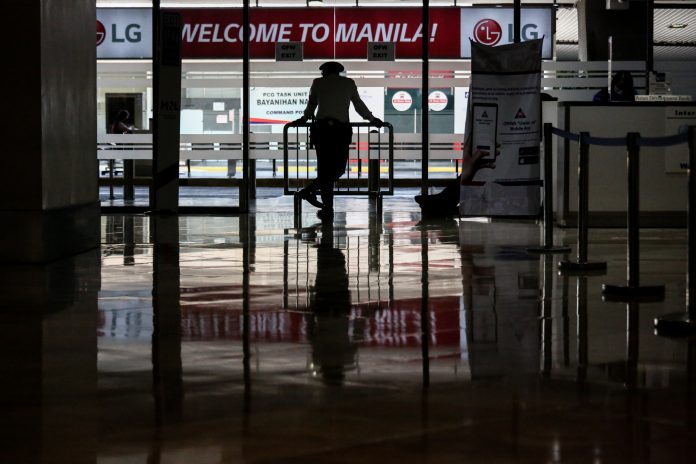Conversion of the old U.S. Air Force’s Nichols Field in Pasay into the Manila International Airport began in 1947 during Manuel Roxas’ presidency. Overseas commercial flights commenced with a longer runway and taxiway in 1953 during the term of President Elpidio Quirino.
Those facts negate the purpose of renaming MIA from Ninoy Aquino International Airport to Ferdinand E. Marcos International Airport. Negros Oriental Rep. Arnolfo Teves’ House Bill 610 says, “It is more appropriate to rename it to the person who has contributed to the idea and execution of the said noble project.”
Marcos in 1946-1947 was among Roxas’ several technical assistants. In 1949-1959 he was congressman of Ilocos Norte, 503 kilometers from MIA. Successive administrations modernized and expanded the facility. President in 1965-1986, Marcos rebuilt the main terminal razed by fire in 1972. MIA came to be known as Ninoy Aquino International Airport via RA 6639 of 1987 to remember the 1983 assassination of the democracy icon-senator at the tarmac.
Still Teves adds, “It is more appropriate to bear the name that has contributed and legacy (sic) in our country to make the Philippines a center of international and domestic (sic) air travel, who has instituted and built or conceptualized the project in making pride (sic) of our country.” Malacañang, now under President Ferdinand R. Marcos Jr., is distancing itself from the bill.
Other matters are more urgent at MIA. Passenger services need improving. MIA recently was rated worst international airport for business travelers. The reasons are obvious. Toilets at the three terminals are few, cramped, decrepit, stinky and dank. Pity arriving passengers who delay calls of nature inflight only to confront long queues on landing.
Waiting and departure lounges are limited. Spaces have given way to cafes and shops, some owned by relatives and friends of MIA managers. Drinking fountains, if any, are hard to spot. Passengers must buy bottled water six times the normal price.
There’s no place except on the floor to work on laptops. Exhausted voyagers whose flights are delayed long hours stretch out and sleep there too. Flight announcements blare like circus barkers from tinny sound systems.
The previous admin mislabeled MIA as a destination airport and not a hub. Overlooked were 13,500 daily arrivers from overseas work who connect to flights home, plus the same number of daily departees who fly out of MIA also from island connections. Also, tourists who rush off to final resort destinations, instead of exiting MIA and getting snarled in Manila’s notorious traffic.
MIA, with Clark Airport in Pampanga, Mactan Airport in Cebu, and Davao City Airport, are hubs for the archipelago’s 7,641 final destinations. Ignoring that, former managers wasted PhP640 million on facelift of one terminal’s exterior. Another PhP680 million was frittered away to replace another terminal’s baggage conveyor belt that only needed repair.
A decades-long PhP12-million yearly contract for grass-cutting and janitorial works suddenly was doubled for unverified equipment upgrade. A PhP300-million computerization did not cover the most crucial portion of MIA operations: accounts receivables. That enabled influential airlines to evade payment of multimillion-peso airport fees. Aircraft use the tarmac for hours-long repairs instead of being towed away. A Chinese jumbo jet that skidded off the concrete taxiway years ago is still there, a safety hazard.
A huge commercial space was leased for two years without MIA board approval to the in-house lawyer’s son-in-law who turned around and subleased it for ten years to an international airline for thrice the amount. Two MIA Authority board members kept blowing the whistle on the scams. If not for them, MIA would have granted PhP109-billion rehab and operations to a bankrupt firm.
MIA is hopelessly congested. Wedged between residential-commercial subdivisions, its T-shaped runways can no longer be extended or accept more takeoffs and landings. The PhP620-million transfer of cargo flights and fish runs to Sangley airstrip across Manila Bay failed. The runway there floods up with rains and high tide.
The old airport can tandem with Clark for business and leisure travelers until San Miguel Corp. builds the modern replacement four-and-a-half times bigger in Bulacan.
Jarius Bondoc is an award-winning Filipino journalist and author based in Manila. He writes opinion pieces for The Philippine Star and Pilipino Star Ngayon and hosts a radio program on DWIZ 882 every Saturday. Catch Sapol radio show, Saturdays, 8 to 10 a.m., DWIZ (882-AM).
The views expressed in this article are the opinions of the author and do not necessarily reflect the editorial stance of LiCAS.news.









